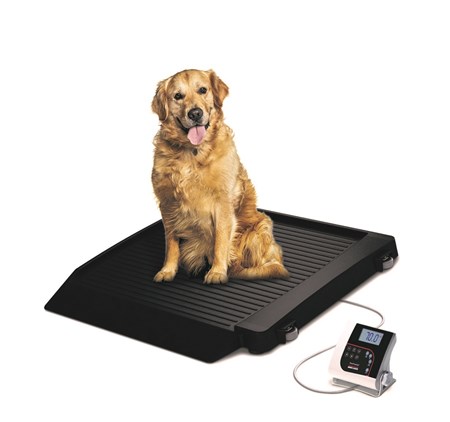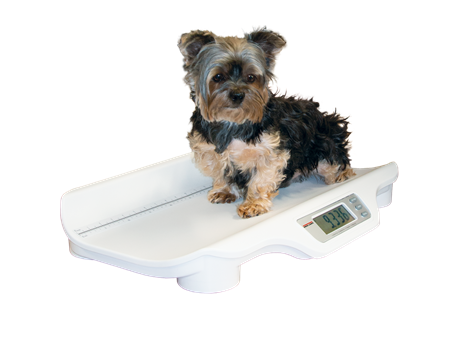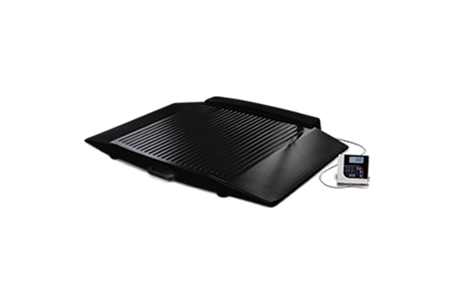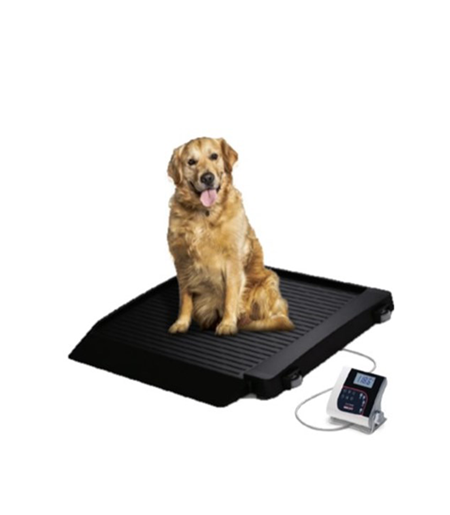Is the website displaying in the correct language? Please confirm or select a different language.
Your region has been set automatically. Please confirm or select a different region.
The Benefits of Using a Pet Scale for Weight Management
Often pet owners love their pets so much that they take pleasure in spoiling them with excessive treats and food scraps. However, too much poor-quality food paired with a lack of physical activity can lead to persistent weight gain. With an increase in pet obesity, it is important to use accurate measuring equipment to effectively assist in treatment.
Health Concerns in Pets
Obesity is linked to a number of health concerns such as difficulty breathing, heat intolerance and high blood pressure. Overweight pets also have a higher risk of tumors, cancer, heart disease, liver disease and arthritis. The pet’s quality of life is negatively impacted as daily activities that require stamina or mobility, such as grooming, running or climbing stairs, become a strain. In addition, obesity can contribute to difficulties with pregnancy and delivery, or incontinence when lying down or sleeping.
Scale Solutions
The good news is that obesity and the many health risks linked to it can be prevented through proper diagnostics. When it comes to weight management, the right scale is necessary to track patient progress and ensure they are losing weight at a healthy, sustainable rate.
Pet scales come in a range of sizes depending on the type of animal being weighed, from small animals such as turtles or hamsters to large animals such as horses or cattle. A scale specifically designed with movement compensation technology will give you the accuracy that other scales can’t provide because it captures precise weight readings even if the pet is moving around on the scale.
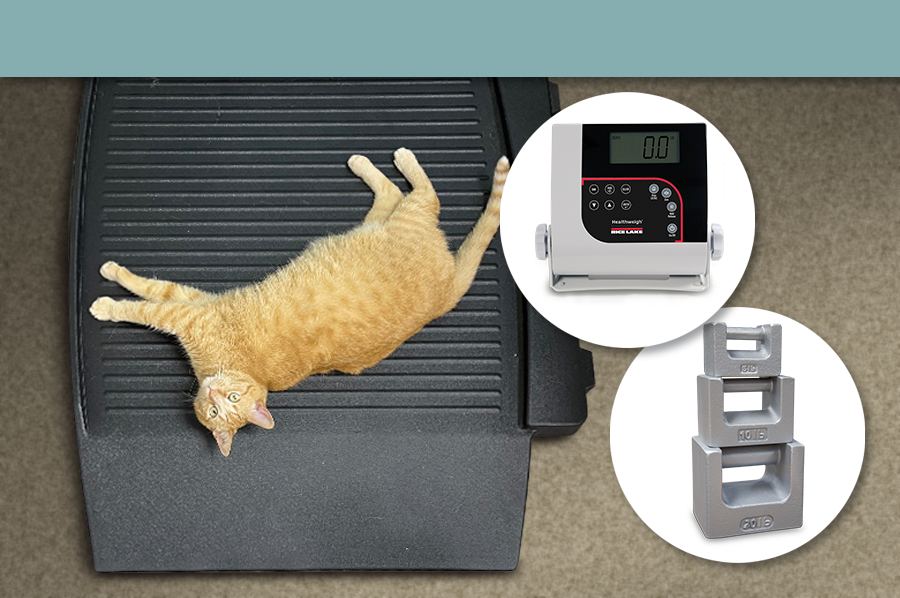
Using a Pet Scale
After you’ve chosen the right scale for your facility, there are two key things to remember when using the scale:
1. Regularly check the scale for accuracy. Each scale’s manual will have unique instructions, but the procedure is usually the same. Return the scale to zero and place a certified test weight on the scale. If the scale reading matches the test weight, the scale is accurate and you can weigh the pet. If not, you may need to recalibrate the scale prior to weighing a pet.
2. Utilize the tare function. Before weighing the animal, you should remove the extra weight of collars, kennels, trays or any other equipment by using the tare function. To tare the weight of a collar for example, you set the collar on the scale and press the TARE button. This temporarily sets the scale to zero with the weight of the collar. When you put the collar back on the pet, the weight shown on the scale will only reflect the weight of the pet.
Ultimately, owners want the best life for their pets and, with the right equipment, you can team up and create a better quality of life for your patients with detailed care plans.
If dieting is recommended as part of the pet’s care plan, you can encourage clients to use a small food scale to weigh dry and wet food for better portion control. By using the tare function to remove the weight of the scoop, bowl or container prior to weighing food, pet owners can confidently feed their pets the correct portions.
Rice Lake Weighing Systems offers a variety of pet scales to provide accurate weights no matter the size of the animal.



 My Account
My Account
